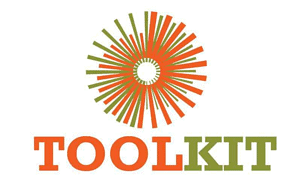Transforming Welding Education with Virtual Reality – Tech-Digital Newsletter
We are excited to share the latest developments from The Toolkit for Skills and Innovation Hub in our inaugural Tech-Digital newsletter. In this edition, we delve into an exciting innovation that is reshaping welding education – the integration of Virtual Reality (VR) technology.
Introduction to Virtual Reality (VR)
VR is a powerful tool that immerses individuals in a digital world, providing a lifelike environment that can be interacted with in a seemingly real or physical way. VR has applications across various sectors, including welding up-skilling and re-skilling.
Challenges in Traditional Welding Up-skilling and re-skilling
Traditional welding up-skilling and re-skilling in Kenya, especially in the informal Juakali sector, has been fraught with challenges. These challenges include:
Occupational hazards: The Juakali sector often lacks proper safety measures, leading to occupational hazards such as eye damage, burns, and exposure to harmful gases.
High training costs: The cost of traditional welding training can be prohibitively high due to material wastage, extended training periods, and expenses associated with raw materials like gas.
Limited skill certification: Many talented welders remain uncertified, limiting their access to better job opportunities, as companies often opt to import skilled labor for larger projects.
The Toolkit’s Innovative Solution
The Toolkit for Skills and Innovation Hub has introduced cutting-edge VR technology into welding up-skilling and re-skilling to address these challenges. This pioneering approach offers several remarkable advantages:
Cost reduction: VR training significantly reduces the cost of becoming a proficient welder by eliminating material wastage and compressing the training period. This cost-effectiveness expands access to quality welding up-skilling and re-skilling for a broader segment of the population.
Enhanced safety: With VR, trainees can practice without exposure to real-world hazards, making the learning process much safer. This is particularly important in the Jua kali sector, where safety measures have often been lacking.
Accelerated learning: Trainees who start with VR training find it easier to transition to actual welding. The immersive nature of VR allows them to gain confidence and skills more rapidly, expediting their journey to becoming competent welders.
Recognition of Prior Learning
The Toolkit also emphasizes the recognition and certification of existing welders’ skills. Through a model of Recognition of Prior Learning, we aim to reskill experienced welders using virtual reality in just two months, opening doors to new opportunities for them and addressing the shortage of certified welders in Kenya.
Kenyan Context
In the Kenyan context, where the Juakali sector plays a pivotal role in the welding industry, the Toolkit’s VR approach is a game-changer. It empowers aspiring welders with affordable, safe, and efficient training, helping them overcome traditional barriers to entry.
Furthermore, this innovative approach aligns with the broader Technical and Vocational Education and Training (TVET) initiatives in Kenya, which aim to enhance the employability of youth and provide skills that are in demand in today’s job market.
In Conclusion
The Toolkit for Skills and Innovation Hub is committed to transforming welding up-skilling and re-skilling in Kenya through the use of VR technology. We believe that this innovative approach has the potential to make welding up-skilling and re-skilling more accessible, safe, and effective, and we are excited to see the positive impact it will have on the lives of aspiring welders and the communities we serve.
References
Virtual Welding: Learn to Weld with Welding Simulators: https://blog.perfectwelding.fronius.com/en/virtual-welding-learn-to-weld-with-welding-simulators/
Advantages of Virtual Reality in Up-skilling and re-skilling: https://www.classvr.com/blog/advantages-of-virtual-reality-in-up-skilling and re-skilling/
